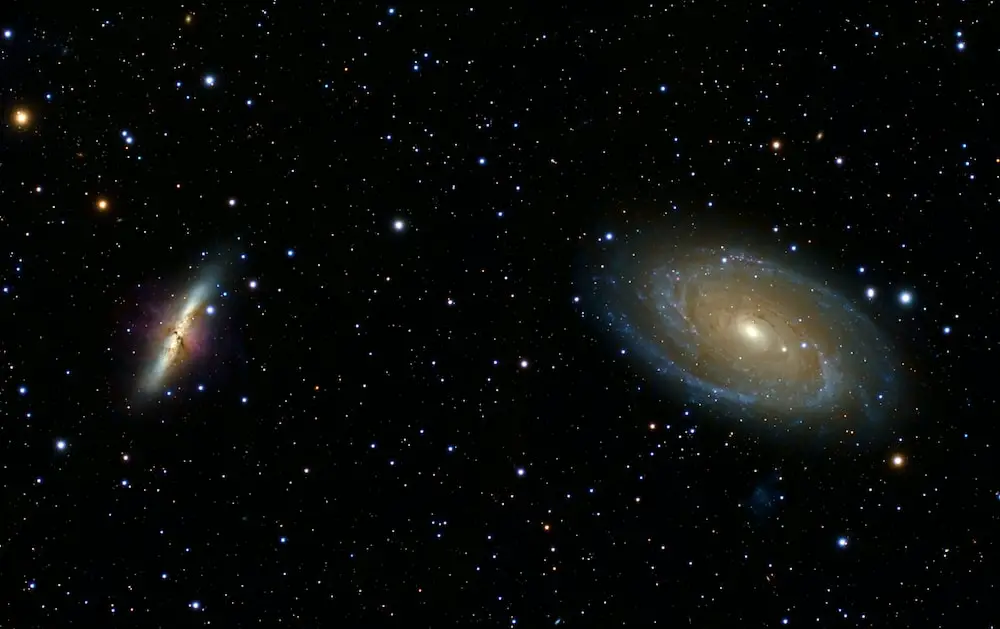While many industries are using the growing trends of artificial intelligence, scientists are taking advantage of it to make new fascinating astronomical discoveries for humankind. Citizen scientists and artificial intelligence collectively discovered a mind-blowing 430,000 new galaxies that spread across the COSMOS.
These newly spotted cosmic objects include 30,000 ring galaxies which are identified as the rarest of all possible galaxy shapes to exist. The latest discoveries were presented as the first results from the “GALAXY CRUISE” citizen science project. The results were produced by 10,000 volunteers who searched for these cosmic objects via the data obtained from the Subaru Telescope. The Subaru Telescope was built as an 8.2-meter, optical-infrared telescope.
The observatory was mounted near the summit of the extinct volcano Maunakea on the island of Hawaii. Unlike some ground-based telescopes, Subaru obtained a large amount of interesting data from the Universe. In fact, its data collection is so massive that astronomers find it difficult to study it and identify and classify the shapes of new these cosmic objects.
However, the 10,000 citizen scientists made things easy for these astronomers. They volunteered to study a large amount of data and identify these new galaxies. However, despite the brilliant 10,000 citizen scientists who participated in this project, they still needed additional support. Hence, they used AI to support their research and make more discoveries from the data.
“Although AI classification takes less than one hour even for 700,000 galaxies, this work cannot be done without the data collected by GALAXY CRUISE over the past two years,” team leader and Waseda University researcher Rhythm Shimakawa said in a statement. “We would like to thank all the citizen astronomers who participated in the project. I hope to see more collaborative outcomes in the future.”
How the team used AI to search for the rarest rings new galaxies

Ring galaxies are one of the rarest galaxy types. Note that these cosmic objects often come in different sizes and shapes. Our Milky Way galaxy belongs to the spiral galaxy type. Astronomers revealed that spiral galaxies often have their long arms extended from a bright and dense central concentration of stars, gas, and dust.
Based on our current understanding of the universe, spirals are the most common type of galaxy as they make up nearly 70% to 80% of the entire cosmos. Unlike spiral galaxies that are scattered all over the universe, ring galaxies are rare as they occupy about 1% to 3% of the observable universe.
Astronomers revealed that this number can even fall to 0.1% in some ring galaxy populations. Generally, ring galaxies have dense cores of ancient stars encompassed by distant rings of blue young stars. They are so rare that the first ring galaxy was spotted in 1950.
The team that made this latest discovery used AI to make faster classification of these cosmic objects. Shimakawa and his colleagues first introduced the AI to catalogs of classifications made by humans. Once the AI got familiar with 20,000 galaxies classified by scientists, it used the experience to identify about 700,000 new galaxies in the Subaru data.
The artificial intelligence was able to classify 400,000 cosmic objects as spiral galaxies and 30,000 of the objects as ring galaxies. This classification provided the team with a sample size of these rare galaxies that is massive enough to start making interesting analyses of the regions.
The latest discoveries help to improve our knowledge of extremely rare ring galaxies and also show the power of AI in analyzing large amounts of astronomical data. The team published their findings in January in the journal Publications of the Astronomical Society of Japan.




